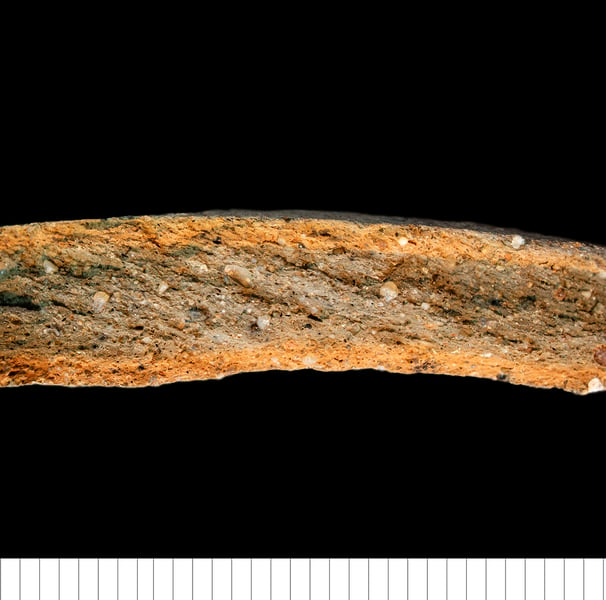THETGA - Gayton Thetford-type ware
Fine-medium sand in silty matrix, sand generally coloured rather than clear (pink, brown, white, cloudy), sparse flint, sparse-moderate ferrous oxide, sparse chalk. Kiln samples vary from orange to dk grey, some with red margins. Some sherds not smoothed, so sand grains clearly visible on surface.
Thin-section description (H. Page): Moderately well-sorted, equant and elongate, rounded to sub-rounded, coarse to medium sand sized quartz and rare polycrystalline quartz. Rare microcline and plagioclase feldspar, elongate and rarer equant muscovite mica, chert, and micritic calcite inclusions. Additionally, clusters of quartz grains cemented together most likely derive from the temper. The matrix of the sherd is oxidised and is comprised of a mixture of iron rich non-calcareous clay and a calcareous marl with micritic calcite. The matrix is calcareous, optically inactive, with common iron rich red streaks and sharp discordant iron rich textual features of a high optical density. Sand temper has been added to this clay matrix. Meso- and micro- elongate voids and vughs.


Copyright
This website, and the type series, was created by Dr Sue Anderson, Spoilheap Archaeology: www.spoilheap.co.uk
I am available for contract work on pottery from East Anglia and beyond. Email sue@spoilheap.co.uk
© 2024. All rights reserved.
To visit the type series at Suffolk County Council Archaeological Service, Bury St Edmunds, contact Faye Minter: Faye.Minter@suffolk.gov.uk
Tel: 01284 741 228 to make an appointment.